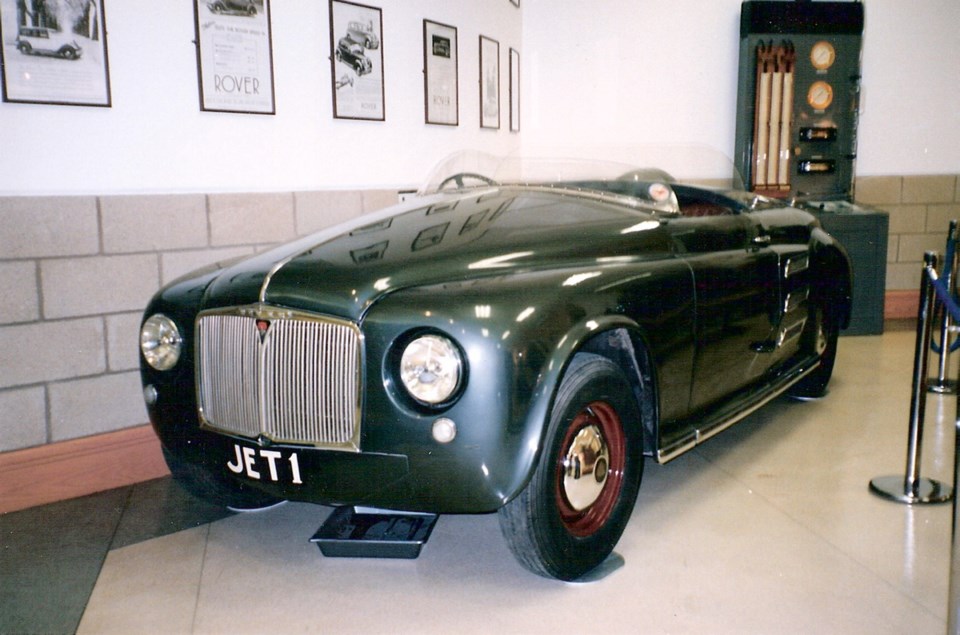By the end of the Second World War, gas turbines were starting to come of age for aircraft use. Although research had been conducted for many years, it was Briton Frank Whittle’s 1930 patent that was really the genesis of the modern gas turbine and jet plane.
Although the first jet-plane flight was by a German Heinkel in 1939, turbines would not be ready for major Second World War service. But in the optimism that flourished after the war, we were assured those smooth, vibration-free “windmills” would soon be zipping us along our highways.
Home-handyman magazines such as Popular Mechanics and Popular Science teased readers with sensational predictions of breakthroughs such as atomic powered or turbine-engined cars.
While the basic airplane and land-vehicle gas turbine is similar, its application (except in jet-powered speed-record cars) is different. A pure jet plane (not turboprop) is propelled by the turbine’s high-pressure exhaust thrust. Automobiles’ turbine engines are geared to the driving wheels.
In spite of the optimism, turbines had challenges for automobile use. Large turbines worked well at high altitudes, but smaller ones closer to sea level proved uncompetitive with piston engines in fuel economy.
Other problems were lack of compression braking, a large volume of hot exhaust gas and a turbine’s preference for constant speed. Turbines also required expensive heat-resistant materials.
The turbine’s advantages included extreme smoothness, light weight, fewer parts, no cooling system and the ability to burn cheaper fuel.
England’s Rover Co. had collaborated with Rolls-Royce on turbines during the war, and when peace came it began transferring its turbine expertise to automobiles. It demonstrated its first one in 1950.
Nicknamed the “JET,” the Rover turbine was fast. In 1952, at the famous Jabbeke highway near Ostend, Belgium, the mid-engined turbine Rover ran a flying mile at almost 245 km/h.
In June 1953, Road & Track reported that the 1,270-kilogram JET roadster scooted to 100 km/h in 6.5 seconds, and 160 in 13.2. It got six to nine miles per gallon.
Maximum acceleration required a special launch technique. There was no transmission, so the driver applied the brakes, revved the engine to 45,000 rpm and released the brakes. The car catapulted off the line.
Other prototypes followed, and a Rover turbine-powered BRM entered the 1963 24-hour Le Mans race. Although not competing officially, it averaged 174 km/h and finished eighth. Rover did not build a production turbine car.
Turbines also raced in the Indianapolis 500 during the 1960s, and would have won in 1967 had a $6 transmission bearing not failed on the 197th lap (of 200). Intense piston-car lobbying convinced the conservative Indianapolis establishment to keep restricting the turbine’s air inlet area until it became uncompetitive.
Renault of France was also developing turbine cars. Their Renault fibreglass-bodied Etoile Filante (Shooting Star) special achieved a speed of 309 km/h at Bonneville in 1956.
General Motors and Ford experimented with turbines in several applications, including trucks, buses and cars. GM also built three turbine-powered 1950s Firebird concept cars.
While many automakers assessed turbines, Chrysler Corp. came closest to production. It demonstrated its first turbine-powered 1954 Plymouth at the dedication of its new proving ground in Chelsea, Michigan, in 1954.
One of Chrysler’s key developments was a rotating heat exchanger (like a radiator), which captured exhaust gas heat and used it to heat the incoming air. This reduced the exhaust temperature and improved fuel economy, and heat exchangers would become standard practice on automotive turbines.
After more testing in a 1955 Plymouth, Chrysler demonstrated its real-world capability by driving a 1956 Plymouth turbine from coast to coast. It left the Chrysler building in New York on March 26, 1956, and four days later, March 30, it parked in front of the Los Angeles city hall, a distance of 4,862 km.
There were two minor non-turbine-related mechanical problems, and it averaged 16 mpg (U.S.) on a mixture of unleaded gasoline and diesel fuel.
Chrysler continued its research by building a fleet of 50 Ghia-bodied turbine cars, and from 1964 to ’66 passed them through 203 randomly chosen male and female drivers. They covered 1.7 million km and kept careful records.
By the end of the test, the reliability was close to a piston engine, and while there were some disadvantages such as throttle lag and high fuel consumption, user comments were favourable.
Chrysler continued working on car turbines until about 1980, and even though development was accelerated by two 1970s oil crisis, it didn’t came close to replacing the constantly improving piston engine. Small gas turbines did, however, gain some vindication. They can now be found in many automobiles as the “hot” end of a turbocharger.



